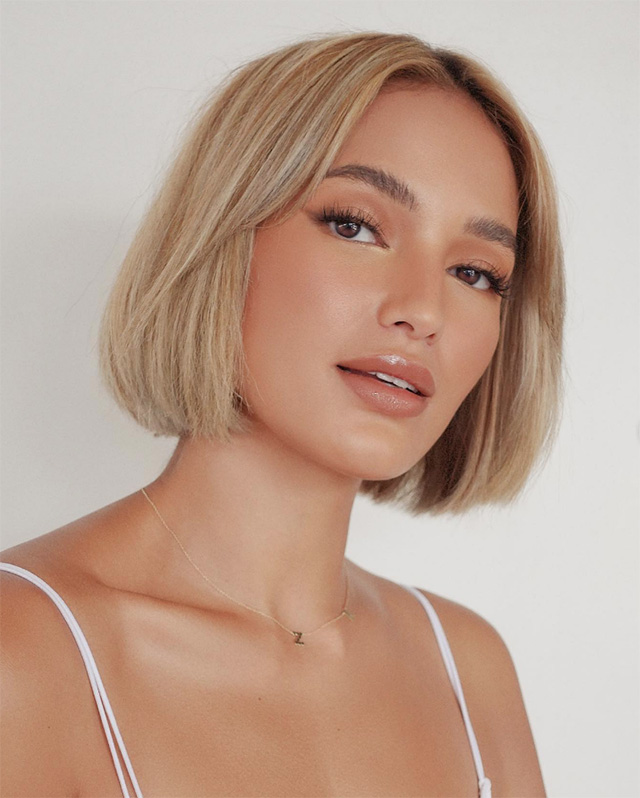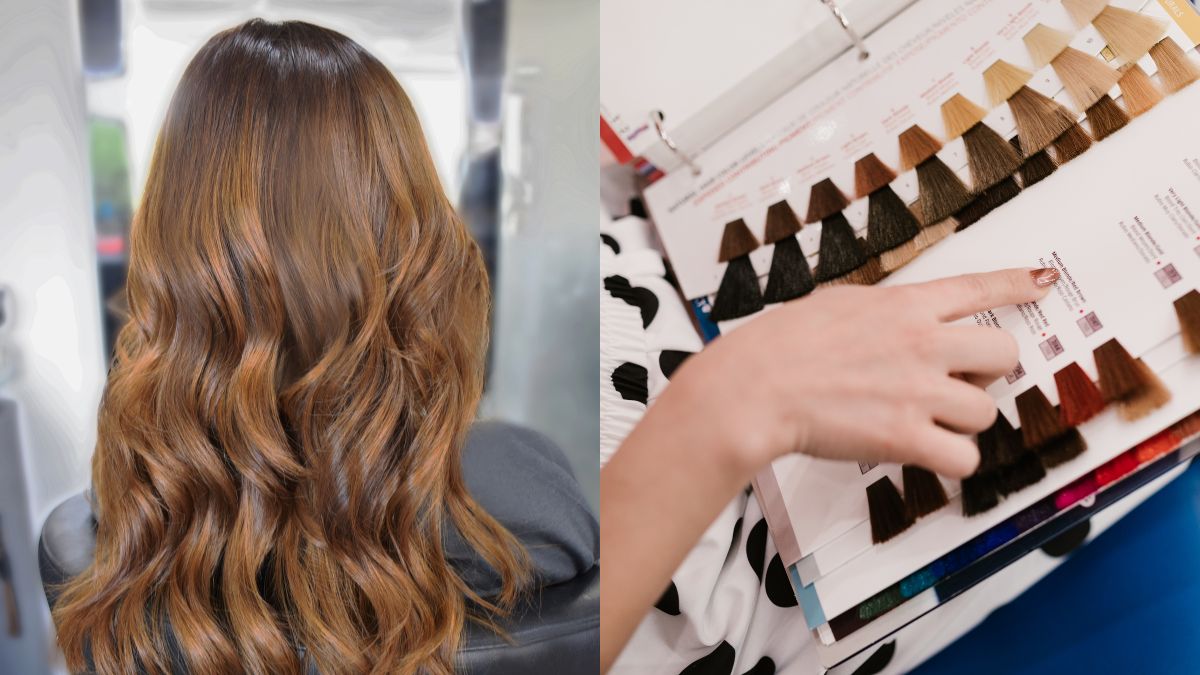Embracing a new you with a different hair color can be exciting and daunting. Whether you are considering your first dye job or looking to switch up your look, this guide will walk you through everything you need to know about hair color.
What is Hair Color?
Hair color refers to a cosmetic product used to change the color of a person's hair. This can range from subtle changes, like enhancing natural hair tones, to dramatic transformations, such as shifting from brunette to blonde or adding vibrant hues like blue or pink.
Hair color is widely used for various reasons, including covering gray hair, experimenting with fashion and beauty trends, or expressing one’s personality and style.
How Hair Color Works
The hair coloring process works differently depending on the type of product used. Here’s how it generally works:
- Hair Bleach. Hair bleaching is often the first step in the hair coloring process. Individuals who want to change their dark hair into a lighter, bolder color need their hair bleached first. Hair bleach comes in two types: lightener and powder bleach. A lightener can bleach black hair into brown. In comparison, powder bleach can change black hair into light brown.
Hair bleach is most often used with a developer. A developer is a cream or liquid solution that "develops" the color of the hair dye. It does this by penetrating the hair shaft and breaking down the pigment, similar to how hair bleach works. But if hair bleach can drastically lighten dark hair, a developer can only lift two to three shades at full strength. - Permanent Hair Color. This involves a chemical process that opens the hair cuticle to allow the color to penetrate the cortex and alter the hair’s natural pigment. A developer is used to open up the cuticle and break down the pigment within. This allows the pigments in the hair dye to get in. The new color is bonded with the hair shaft, creating a lasting color change.
- Demi-Permanent and Semi-Permanent. Demi- and semi-permanent dyes add color without significantly altering the natural pigment. They do this by coating the hair shaft instead of deeply penetrating it. Demi-permanent dyes use milder developers, while semi-permanent dyes do not. Consequently, these two are less damaging options for hair color.
- Temporary Hair Color. This works by coating the hair surface with a color that washes out easily. It doesn't penetrate the hair shaft or require a developer, making it the gentlest option.
Hair coloring can be done professionally at salons or using DIY hair dye kits at home. However, it’s not advisable to try hair coloring at home especially if you’re going for demi-permanent, semi-permanent, or permanent dyes. Hair bleach and developers can severely damage hair if used incorrectly.
Hair Color Options and Variations
Bleach
Removes pigment from hair, making it lighter. Often used before applying a light or vibrant hair color to dark hair.

Best For
Best for those looking to go several shades lighter.
Maintenance
Bleached hair is essentially damaged hair. Use products that can restore hair strength and moisture.
Other Tips
Be gentle with your hair. Avoid using hot tools when styling.
Demi-Permanent Hair Color
This lasts longer than semi-permanent hair color, usually up to 24 to 28 shampoos. It uses a weak developer only to open up the hair cuticle without doing any lifting.
Best For
Suitable for enhancing natural color, blending grays subtly, and adding shine without the commitment to a permanent change.
Maintenance
Extend the life of the color by washing hair less frequently and using products formulated for colored hair.
Other Tips
Use hair masks weekly to keep hair hydrated. Avoid sun exposure.
Fashion Colors
Vibrant, non-traditional colors like pinks, blues, purples, and greens. Most often available in demi-permanent, semi-permanent, and temporary formulations.

Best For
Ideal for expressive, bold looks.
Maintenance
Use color-preserving products. Use cold water when washing hair to prevent the dye from prematurely fading.
Other Tips
Consider starting with a bleached hair base for vibrant results.
Hair Gloss
A semi-permanent treatment that boosts hair's shine. Hair gloss can be clear or tinted. Tinted versions subtly enhance or adjust hair color, improve tone, and reduce brassiness from bleaching.
Best For
Apply to add shine and enhance tone. It can be clear for shine or tinted for subtle color adjustments. This is suitable for all hair types.
Maintenance
Minimal maintenance is required. Repeat treatment every few weeks as needed.
Other Tips
Use leave-in treatments or conditioners that offer shine and hydration.
Natural or Vegetable Hair Dyes
Made from natural ingredients, these dyes offer a more environmentally friendly and less chemically invasive option. Results and durability can vary widely compared to synthetic dyes.
Best For
Those seeking a more natural coloring solution, uncomfortable with conventional dyes, or sensitive to chemicals.
Maintenance
Natural dyes may fade faster, so supplementing with color-protecting natural care is important.
Other Tips
Prepare hair by avoiding silicone-based products that can block color absorption. Conditioning after applying herbal dyes can enhance shine and manageability.
Permanent Hair Color
This alters your hair color permanently until new growth occurs at the roots. The dye works with a developer for deep color penetration. When the original hair color is too dark from the desired new color, bleaching may also be required.
Best For
Ideal for covering gray hair or making a significant color change.
Maintenance
Use hair products formulated for color-treated hair to maintain vibrancy. Avoid sun exposure by wearing hats or using an umbrella.
Other Tips
Use a deep conditioning treatment regularly to mitigate damage. To touch up roots, use the same color or a root touch-up kit between full coloring sessions.
Root Touch-Up
Designed specifically to cover root regrowth. Touch-ups blend root color with existing hair color seamlessly.
Best For
Specifically for covering root growth between full coloring sessions. Choose a shade that will match your hair color.
Maintenance
Regular touch-up sessions are the only way to maintain seamless color.
Other Tips
While roots will continue to grow, using color-safe hair products will prolong hair dye.
Semi-Permanent Hair Color
Semi-permanent dyes last for approximately six to 12 shampoos. This hair color option doesn't use developers.
Best For
Great for trying out new colors without having to commit to permanent change,
Maintenance
Use sulfate-free hair products to maintain color. Avoid sun exposure.
Other Tips
Use cold water when washing hair to prolong hair color.
Frequently Asked Questions
How often should I color my hair?
It depends on the type of dye, your hair growth rate, and personal preference. For root touch-ups, you’ll want to schedule an appointment every four to six weeks.
Can hair dye cause damage?
Yes, especially with frequent use of hair bleach or strong developers.
Is it safe to dye my hair myself?
Yes, but for best results and to minimize risks, opt for professional services.
How can I transition back to my natural hair color?
Gradually reduce the frequency of dyeing. Choose semi-permanent dyes closer to your natural color while allowing your roots to grow.
Can I still dye already damaged hair?
It's best to consult with a professional. They may recommend treatments to improve your hair's health before applying dye.



